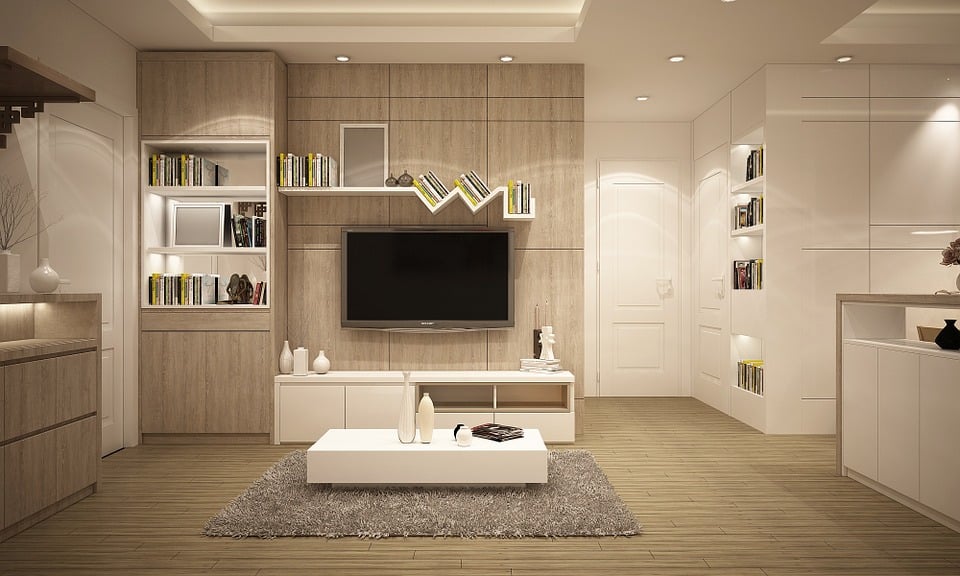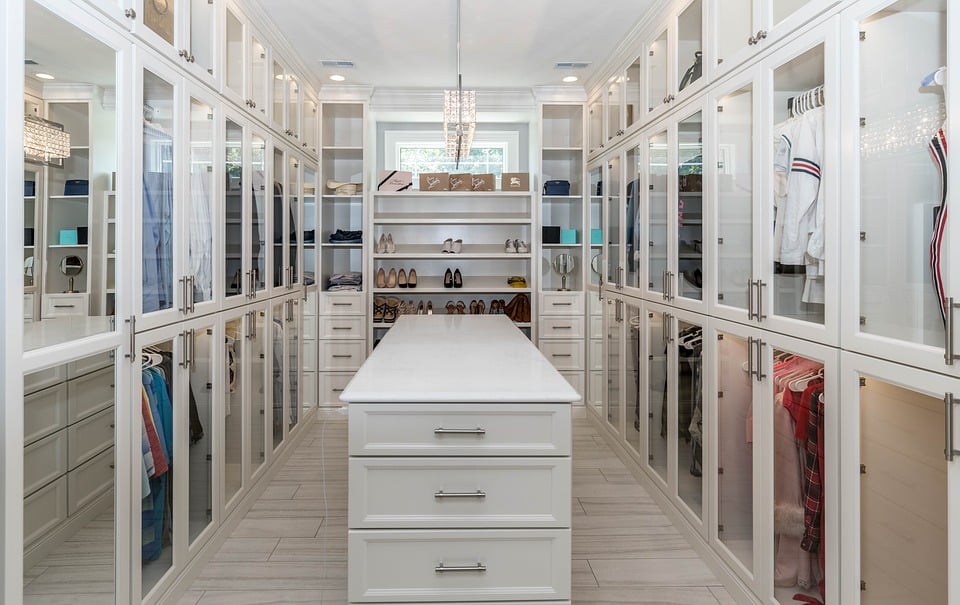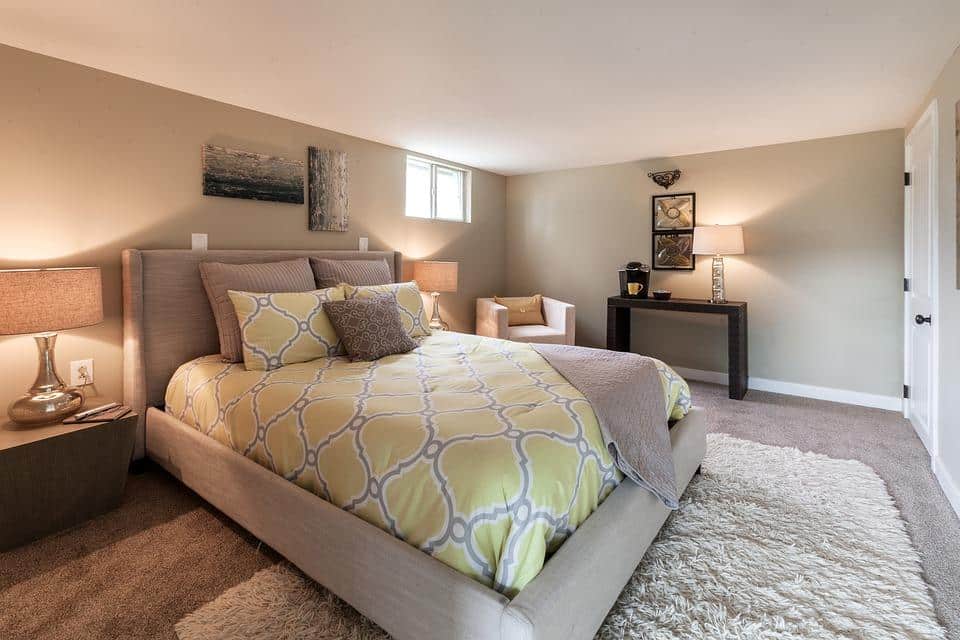How to Choose the Best Spot for Your TV in a Family Room

Finding the right spot for your TV in a family room is crucial for creating a comfortable and functional space. The TV often serves as a focal point for entertainment and relaxation, so its placement needs careful consideration. Whether you’re redesigning an existing room or starting from scratch, understanding the impact of TV placement on the overall layout and usability of the space is essential. This article will guide you through the factors to consider when deciding where to place your TV in a family room, helping you make the best choice for your home.
The layout of a family room can vary significantly, and this diversity influences where the TV should be placed. From large, open-concept spaces to cozy, intimate rooms, each layout presents unique challenges and opportunities. The goal is to find a balance between aesthetic appeal and practical functionality, ensuring that the TV is both easy to watch and harmonizes with the room’s design.
In addition to layout, the activities that take place in your family room will also dictate the ideal TV placement. If the room is primarily used for watching movies or sports, the TV will likely take center stage. However, if the room serves multiple purposes—such as a space for socializing, reading, or playing games—the TV may need to be positioned more discreetly to avoid dominating the space.
Another key consideration is the integration of technology. Modern family rooms often feature a variety of electronic devices beyond the TV, such as gaming consoles, streaming devices, and sound systems. The placement of the TV should accommodate these devices while keeping cables and connections organized and out of sight.
Finally, it’s important to think about the future. As technology evolves and your family’s needs change, the TV placement that works today might not be ideal tomorrow. By planning ahead and considering flexible solutions, you can create a family room that remains functional and stylish for years to come.
2. Assessing the Room Layout
The first step in deciding where to place your TV is to assess the room’s layout. This involves taking precise measurements of the room’s dimensions, including the length, width, and height. Understanding the room’s shape and size will help you determine the best location for the TV, ensuring that it fits comfortably within the space without overwhelming it.
In most family rooms, the TV is either the focal point or one of several focal points. Identifying these focal points early in the planning process is crucial. Common focal points include fireplaces, large windows, or built-in shelving units. The placement of the TV should complement these features rather than compete with them. For instance, if the room has a fireplace, you may choose to mount the TV above it or place it on an adjacent wall to create a balanced visual effect.
Doors, windows, and other architectural elements also play a significant role in TV placement. A door that opens directly into the room or a large picture window with a scenic view may limit your options. It’s essential to choose a wall or corner that allows for an unobstructed view of the TV from the primary seating areas while keeping the room’s traffic flow and natural light in mind.
The placement of furniture in the family room will further influence where the TV can be located. Consider the main seating area and how the TV will be viewed from different spots within the room. Ideally, everyone seated in the room should have a clear view of the screen without needing to turn or strain. This may involve rearranging furniture or selecting a wall that allows for a more centralized TV placement.
Lastly, think about the room’s versatility. If the family room is used for multiple activities, you might want to choose a TV placement that allows for easy viewing from various angles and seating arrangements. Flexibility is key, as it ensures that the room remains functional for a variety of uses.
3. Determining the Ideal Viewing Distance and Angle
Once you have a good understanding of the room layout, the next step is to determine the ideal viewing distance and angle for your TV. This is critical to ensuring a comfortable and enjoyable viewing experience. The size of the TV and the distance between the screen and the seating area should be proportionate to avoid eye strain and provide an immersive experience.
Viewing distance guidelines vary depending on the size of the TV. As a general rule, the optimal viewing distance is about 1.5 to 2.5 times the diagonal size of the TV screen. For example, if you have a 55-inch TV, the seating should be positioned approximately 6.5 to 10 feet away. This range provides a clear and comfortable view of the screen, allowing you to take in all the details without having to move your head excessively.
The viewing angle is another important factor to consider. The TV should be placed at eye level when you are seated, which typically means the center of the screen should be about 42 to 48 inches from the floor. This height allows for a natural viewing position, minimizing neck strain and providing an optimal visual experience. If the TV is mounted too high or too low, it can cause discomfort over time, especially during extended viewing sessions.
When considering the viewing angle, it’s also essential to account for the seating arrangement in the family room. If you have multiple seating areas, such as a sectional sofa or chairs placed at different angles, you may need to adjust the TV placement to accommodate everyone’s view. A swivel mount can be a helpful solution in such cases, allowing you to adjust the angle of the TV to suit different seating positions.
Lighting conditions in the room can affect the viewing angle as well. Natural light from windows or artificial light from lamps and overhead fixtures can create glare on the TV screen, making it difficult to see clearly. Positioning the TV to minimize direct light exposure and considering anti-glare screen options can enhance the viewing experience and reduce eye strain.
Finally, consider the long-term use of the room. The ideal viewing distance and angle may change if you plan to upgrade to a larger TV or rearrange the seating in the future. Planning for flexibility can help you maintain a comfortable viewing experience even as your family room evolves over time.
4. Considering Natural Light and Glare
Natural light is a beautiful feature in any family room, but it can present challenges when it comes to TV placement. Sunlight streaming through windows can cause glare on the screen, making it difficult to see the picture clearly. To avoid this issue, it’s important to consider the sources of natural light in the room and how they change throughout the day.
Start by identifying the windows, doors, and other openings that let in natural light. Consider the direction the room faces, as this will determine the intensity and angle of sunlight at different times of the day. East-facing rooms will receive strong morning light, while west-facing rooms will have more direct sunlight in the afternoon. Understanding these patterns will help you choose a location for the TV that minimizes glare.
One effective way to manage natural light is to use window treatments such as curtains, blinds, or shades. These can be adjusted to control the amount of light entering the room, reducing glare and creating a more comfortable viewing environment. If the TV is placed opposite a window, consider using blackout curtains to block out light during the day. Alternatively, light-filtering shades can soften the light and prevent harsh reflections on the screen.
In addition to managing natural light, consider the type of TV screen you choose. Some TVs come with anti-glare technology, which helps to reduce reflections and improve visibility in bright rooms. If your family room is particularly bright or has large windows, investing in an anti-glare TV may be worth considering. This feature can make a significant difference in maintaining picture quality during daylight hours.
Another consideration is the placement of artificial lighting in the room. Overhead lights, floor lamps, and table lamps can also create glare if not positioned carefully. When installing or rearranging lighting, think about how the light will interact with the TV screen. Ideally, lights should be positioned to illuminate the room without shining directly on the screen. This may involve adjusting the angle of lamps or choosing light fixtures with adjustable heads.
Finally, consider the seasonal changes in natural light. The amount of sunlight entering your family room will vary depending on the time of year, especially if you live in an area with distinct seasons. Be mindful of how these changes might affect your TV placement and consider options that allow for easy adjustments as needed. By planning for both current and future lighting conditions, you can create a family room that offers a comfortable viewing experience year-round.
5. Choosing the Right Wall
Selecting the right wall for your TV is a critical decision that impacts both the functionality and aesthetic appeal of your family room. The wall you choose should provide a clear view of the TV from the main seating area while complementing the room’s overall design. In many cases, the TV becomes the focal point of the room, so the wall you select needs to accommodate this role.
One popular option is to mount the TV above a fireplace. This choice can create a visually striking focal point, especially in rooms where the fireplace is already a dominant feature. However, there are some important considerations to keep in mind. First, ensure that the TV is not mounted too high, as this can lead to neck strain. The ideal height for a TV above a fireplace is at or slightly below eye level when seated. Additionally, make sure that the heat from the fireplace does not affect the TV. If necessary, install a mantel or heat shield to protect the screen from direct heat.
Another option is to create a feature wall specifically for the TV. This can be achieved by adding built-in cabinetry, shelving, or a media console that integrates the TV into the room’s design. A feature wall can also include decorative elements such as artwork, paneling, or textured wallpaper to enhance the visual appeal. This approach allows the TV to blend seamlessly with the room’s decor, rather than standing out as a separate element.
If your family room has a large, uninterrupted wall, this can be an ideal location for the TV. A large wall provides flexibility in terms of TV size and placement, allowing you to position the screen at the optimal height and distance from the seating area. Additionally, a large wall can accommodate additional media components, such as speakers, gaming consoles, and streaming devices. Consider using a wall-mounted TV stand or console to keep these devices organized and within easy reach.
For smaller rooms or spaces with limited wall options, consider placing the TV in a corner. Corner TV placement can be a great solution when wall space is at a premium, as it maximizes the use of available space without obstructing traffic flow. A corner TV stand or a swivel mount can help you angle the screen for the best viewing experience, ensuring that everyone in the room has a clear view.
Finally, think about how the chosen wall fits into the overall design of your family room. The TV should complement the room’s color scheme, furniture arrangement, and decor style. Whether you prefer a modern, minimalist look or a more traditional, cozy atmosphere, the TV placement should enhance the room’s aesthetic without overwhelming it. By carefully selecting the right wall, you can create a harmonious and functional space that meets your family’s needs.
6. Wall Mounting vs. TV Stand
When deciding where to put your TV in a family room, one of the key choices you’ll need to make is whether to mount the TV on the wall or use a TV stand. Both options have their advantages and drawbacks, and the right choice will depend on your room’s layout, design preferences, and how you plan to use the space.
Wall mounting the TV is a popular choice for those who want to save floor space and create a clean, streamlined look. A wall-mounted TV can be positioned at the perfect height for viewing, eliminating the need for a bulky stand or console. This option is particularly useful in smaller rooms, where maximizing space is a priority. Wall mounts come in a variety of styles, including fixed mounts that keep the TV in a stationary position and swivel mounts that allow you to adjust the angle of the screen. This flexibility can be especially beneficial in rooms with multiple seating areas or if you need to reduce glare from windows or lights.
Another advantage of wall mounting is the ability to hide cables and cords for a clutter-free appearance. Many wall mounts include channels or covers that conceal the cables, keeping them neatly organized and out of sight. This creates a more polished look and reduces the risk of tripping over loose wires. If you choose to wall-mount your TV, consider hiring a professional to ensure that the installation is secure and that all electrical connections are properly managed.
On the other hand, a TV stand or console offers its own set of benefits. A stand provides additional storage space for media devices, DVDs, gaming consoles, and other accessories. This can be particularly useful in family rooms where multiple devices are used regularly. A well-designed TV stand can also serve as a decorative element, complementing the room’s furniture and decor. Stands come in a wide range of styles, from sleek, modern designs to more traditional, wood-finished options, allowing you to choose one that fits your aesthetic preferences.
A TV stand also offers greater flexibility in terms of placement. Unlike a wall-mounted TV, which is fixed in one location, a TV on a stand can be easily moved or repositioned as needed. This can be advantageous if you frequently rearrange your furniture or if you plan to upgrade to a larger TV in the future. Additionally, a stand eliminates the need for drilling into walls, making it a more straightforward option for those who prefer not to make permanent changes to their space.
However, TV stands do take up floor space, which may be a drawback in smaller rooms. They can also contribute to a cluttered appearance if not organized properly. To avoid this, choose a stand with built-in cable management features and enough storage to keep all your media components tidy and out of sight.
Ultimately, the decision between wall mounting and using a TV stand comes down to personal preference and the specific needs of your family room. Both options offer unique advantages, so consider what works best for your space and lifestyle. Whether you opt for the sleek look of a wall-mounted TV or the functionality of a TV stand, the goal is to create a comfortable and enjoyable viewing experience for everyone in the room.
7. Considering Surround Sound and Acoustics
In addition to the visual aspect of TV placement, it’s important to consider the audio experience in your family room. Surround sound and acoustics play a significant role in creating an immersive entertainment environment. Proper speaker placement and attention to the room’s acoustics can enhance the sound quality, making movie nights, gaming sessions, and TV shows more enjoyable.
When setting up a surround sound system, the placement of the speakers is just as important as the placement of the TV. The goal is to create a balanced sound field where the audio feels natural and envelops the listener. In a typical 5.1 surround sound setup, this means placing three speakers at the front of the room (left, center, and right) and two speakers at the rear. The subwoofer, responsible for bass frequencies, can be placed in a corner or near the front speakers for optimal performance.
The center channel speaker is particularly important, as it handles most of the dialogue in movies and TV shows. This speaker should be positioned directly above or below the TV, aligned with the screen’s center. This ensures that the dialogue comes from the direction of the TV, creating a more cohesive audio-visual experience. The front left and right speakers should be placed at equal distances from the center speaker, angled slightly towards the seating area to create a wide soundstage.
Rear speakers are responsible for delivering surround effects, such as ambient noises and directional sounds. These speakers should be placed behind or to the sides of the main seating area, at ear level or slightly above. The goal is to create a sense of immersion, where sounds appear to come from all around the room. To achieve this, rear speakers should be angled towards the seating area and positioned symmetrically.
Room acoustics can significantly impact the quality of the surround sound experience. Hard surfaces like tile or hardwood floors, bare walls, and large windows can cause sound reflections, leading to echoes and an uneven sound field. To minimize these issues, consider adding soft furnishings such as area rugs, curtains, and upholstered furniture. These elements help to absorb sound and reduce unwanted reflections, creating a more balanced and pleasing audio environment.
If your family room has an open floor plan or unusual dimensions, you may need to experiment with speaker placement to achieve the best sound quality. In some cases, using speaker stands or wall mounts can help you position the speakers at the ideal height and angle. Additionally, investing in acoustic panels or bass traps can further enhance the sound quality by addressing specific acoustic challenges in the room.
Finally, consider the convenience of controlling your audio system. Many modern surround sound systems offer wireless connectivity, allowing you to control the speakers and adjust the sound settings from your smartphone or tablet. This can be particularly useful in family rooms where multiple devices are used, as it allows you to easily switch between audio sources and customize the sound to suit your preferences.
By carefully planning the placement of your surround sound system and addressing the room’s acoustics, you can create an audio experience that complements your TV and enhances the overall enjoyment of your family room.
8. Incorporating TV into the Room’s Design
While the functionality of TV placement is paramount, it’s also important to consider how the TV integrates with the overall design of your family room. The TV should complement the room’s decor, blending seamlessly with the furniture, color scheme, and architectural features. With careful planning, the TV can enhance the room’s aesthetic appeal rather than detract from it.
One approach to integrating the TV into the room’s design is to create a feature wall that serves as a backdrop for the screen. This can be achieved by using decorative elements such as wallpaper, paneling, or textured finishes. A feature wall can help to draw attention to the TV and make it a focal point of the room, especially when combined with built-in shelving or cabinetry. This approach works well in both modern and traditional interiors, as it allows the TV to become part of the room’s overall design narrative.
If you prefer a more subtle approach, consider ways to disguise the TV when it’s not in use. One option is to use sliding panels or doors that can be closed to conceal the screen. This allows you to transform the room’s appearance when the TV is off, creating a more cohesive and stylish look. Another option is to incorporate the TV into a gallery wall, surrounded by artwork or photographs. By blending the TV with other visual elements, you can create a more balanced and harmonious design.
The choice of TV stand or media console also plays a key role in the room’s design. A well-designed stand can serve as both a functional storage solution and a decorative piece of furniture. Look for stands that match the style of your room, whether it’s sleek and modern or warm and traditional. Consider materials and finishes that complement your existing furniture, such as wood, metal, or glass. A stand with built-in storage can help to keep media devices and accessories organized, reducing clutter and maintaining a tidy appearance.
Another important consideration is the placement of lighting in relation to the TV. Proper lighting can enhance the viewing experience while also contributing to the room’s ambiance. For example, installing dimmable recessed lighting or wall sconces around the TV can create a cozy, cinematic atmosphere. Avoid placing bright lights directly behind or in front of the screen, as this can cause glare and reduce picture quality. Instead, focus on indirect lighting that highlights the TV and its surroundings without overpowering the screen.
Finally, think about the room’s color scheme and how the TV fits into it. Darker colors, such as deep blues, grays, or blacks, can help the TV blend into the background, making it less obtrusive when not in use. Lighter colors, on the other hand, can create contrast, drawing attention to the screen. If you want the TV to stand out as a design feature, consider framing it with contrasting colors or materials. Conversely, if you prefer a more understated look, choose colors and finishes that match or complement the TV’s bezel.
By thoughtfully incorporating the TV into your family room’s design, you can create a space that is both functional and visually appealing. Whether you choose to make the TV a focal point or blend it seamlessly with the decor, the key is to strike a balance between technology and aesthetics, ensuring that the room remains a welcoming and comfortable environment for all.
9. Electrical and Cable Management
Proper electrical and cable management is a crucial aspect of TV placement in a family room. Without careful planning, cables and wires can quickly become an eyesore, detracting from the room’s appearance and creating a potential safety hazard. By taking the time to organize and conceal cables, you can maintain a clean, uncluttered look that enhances the overall design of the space.
The first step in cable management is to ensure that you have enough electrical outlets near the chosen TV location. This includes not only the TV itself but also any additional devices such as sound systems, gaming consoles, streaming devices, and Blu-ray players. If your family room does not have sufficient outlets, you may need to hire an electrician to install additional ones. This will prevent the need for extension cords or power strips, which can create clutter and pose a tripping hazard.
Once you’ve ensured that you have adequate electrical outlets, the next step is to organize the cables themselves. There are several options for concealing cables, depending on your preferences and the room’s layout. One popular method is to run the cables behind the wall using an in-wall cable management kit. This creates a clean, professional look, with all cables hidden from view. If you’re not comfortable with DIY installations, consider hiring a professional to handle this task.
Another option is to use cable conduits or raceways, which are plastic or metal channels that can be mounted on the wall to hide cables. These conduits can be painted to match the wall color, making them less noticeable. They offer a flexible solution that can be easily modified if you decide to rearrange your setup or add new devices in the future. Cable clips and ties can also help to keep cables organized and prevent them from becoming tangled.
For those using a TV stand or media console, look for furniture with built-in cable management features. Many modern stands include openings or channels at the back to route cables neatly out of sight. This keeps the area behind the TV tidy and prevents cables from hanging down or becoming tangled. If your stand does not have built-in cable management, you can use adhesive cable clips or Velcro straps to secure the cables to the back of the furniture.
Finally, consider the overall safety of your cable setup. Avoid running cables across high-traffic areas where they could be tripped over or damaged. If you must run cables along the floor, use cable covers or rugs to protect them and reduce the risk of accidents. Additionally, make sure that all connections are secure and that there are no loose or exposed wires. Regularly inspect your cables for wear and tear, replacing any that show signs of damage.
By taking the time to plan and execute proper cable management, you can create a family room that is both functional and aesthetically pleasing. A well-organized setup not only enhances the appearance of the room but also ensures a safer and more enjoyable viewing experience for everyone.
10. Conclusion
In conclusion, the placement of the TV in a family room is a critical decision that affects both the functionality and aesthetics of the space. By carefully considering factors such as room layout, viewing distance, natural light, and acoustics, you can create a comfortable and enjoyable environment for watching TV. Whether you choose to wall-mount the TV, use a stand, or incorporate it into a feature wall, the key is to find a balance between practicality and design.
A well-placed TV can serve as a focal point for the family room, providing a central spot for entertainment and relaxation. However, it’s important to ensure that the TV does not dominate the room or disrupt the overall flow of the space. By taking into account the needs and preferences of everyone in the household, you can create a family room that meets all your entertainment needs while still feeling welcoming and inviting.
In addition to the visual aspects of TV placement, don’t forget to consider the audio experience. Proper speaker placement and attention to room acoustics can enhance the sound quality, making movie nights and TV shows more enjoyable. Whether you opt for a surround sound system or a simple soundbar, the goal is to create a balanced and immersive audio experience that complements the visual aspect of the TV.
Finally, remember that the family room is a dynamic space that may evolve over time. As your needs change, you may decide to upgrade your TV, add new devices, or rearrange the furniture. By planning for flexibility and considering future possibilities, you can ensure that your family room remains functional and stylish for years to come.
Whether you’re starting from scratch or updating an existing room, taking the time to plan your TV placement carefully will pay off in the long run. With the right approach, you can create a family room that is both beautiful and practical, providing the perfect setting for entertainment and quality time with loved ones.













